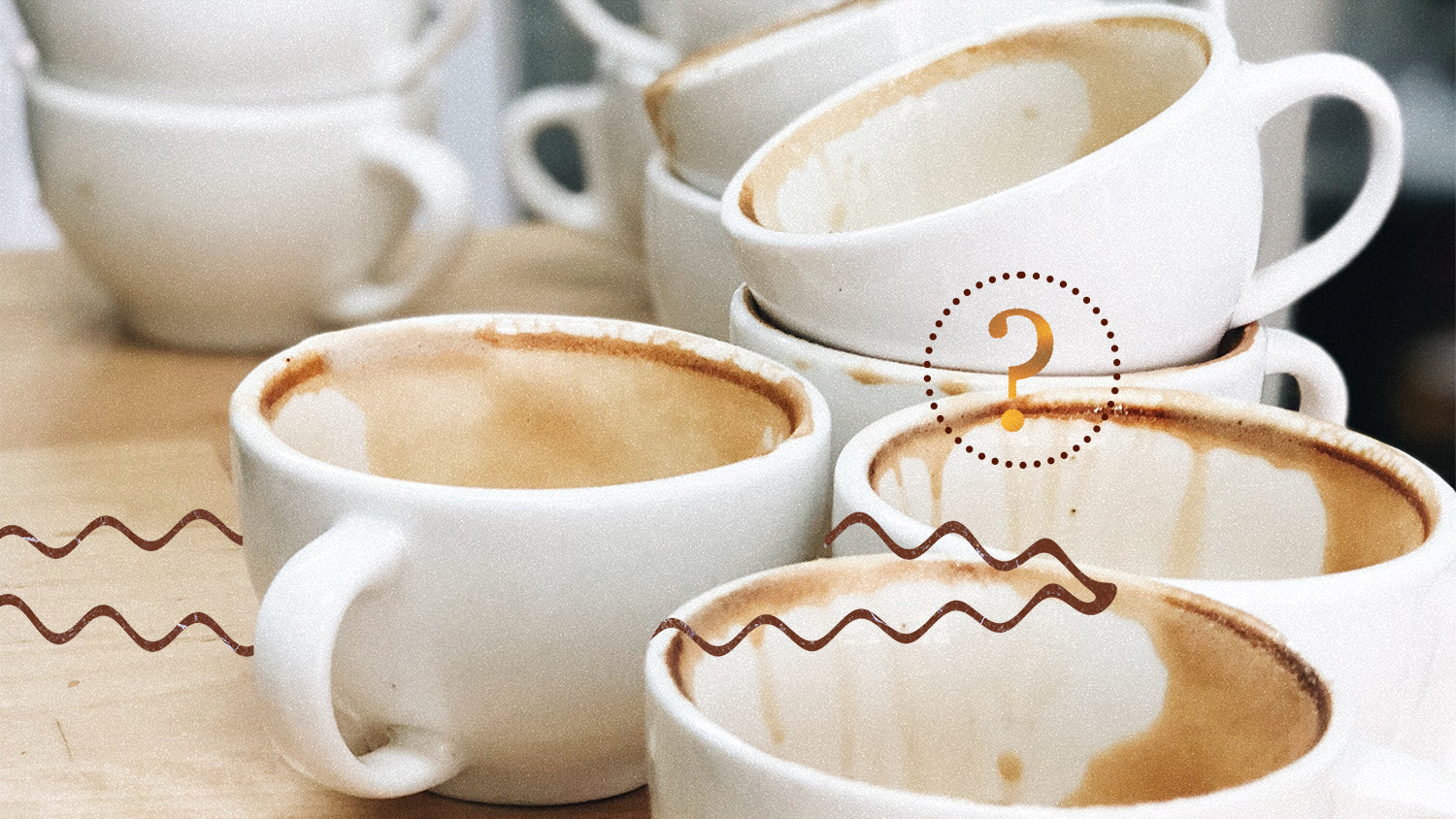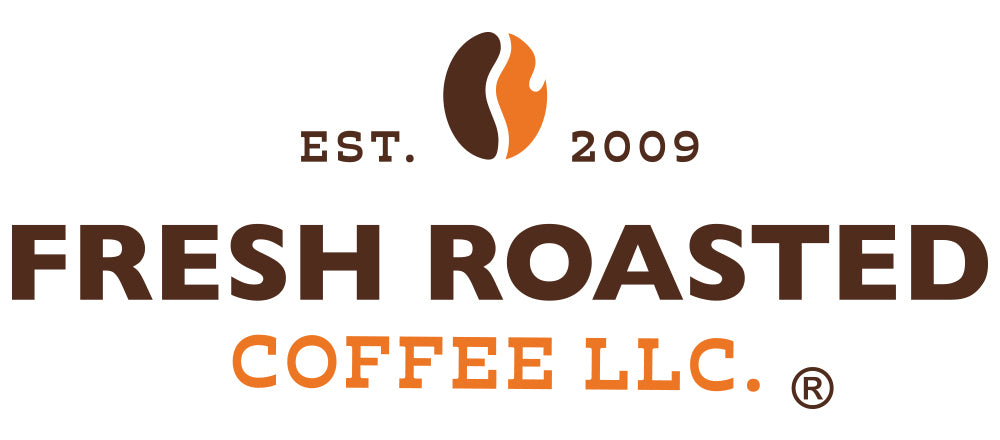What the Cup?

Why is it that your coffeemaker says it makes 10 cups but you know there's no way you're getting 10 cups out of there?
You get up in the morning and make yourself a nice cup of coffee. How many ounces is in that mug?
You brew up a full pot at work and it's got a 12-cup capacity. So how many people in the office get a refill before it's time to make another? (Especially if Bob wants to top off his “World's Greatest Dad” travel mug!)
We're going to try to take the mystery out of coffee cups with a quick and easy guide that will hopefully make life a little simpler for you. First thing to understand is that your mug is not a cup.
The coffee culture in Europe dates to the 17th century. Back in those days, coffee would have been consumed almost exclusively in a coffeehouse, where a tasse à café would have been the vessel of choice. Tasse à café literally means “cup of coffee” and refers to a small porcelain cup that was the standard from which people drank their brew.If you took high school French, you may recall that demi means half - so a demitasse, the cup espresso is generally served in, means half a cup. If you were having a coffee in 1689, it was at a coffeehouse, and it was served in a tasse à café, which had a capacity of about 4 oz. Though coffee culture has changed a lot in the last three to four hundred years, pretty much everything is based on that tiny (by modern standards) serving size. (If you want to know why they used a 4-oz. cup, well, we're not sure, but you could start by asking the folks at the Queen's Lane Coffee House, the oldest coffee house in Europe, which first started serving bean juice in 1654!)
Let's look at the typical autodrip coffeemaker. It's been ubiquitous on nearly every kitchen counter since the 1970s. One of the biggest names in coffeemakers is Bunn and their bestselling coffeemaker has a 10-cup carafe with capacity of 50 oz. Cuisinart has a 14-cup / 70-oz. carafe. Mr. Coffee—at one point, practically the name in countertop coffeemakers—features a 12-cup / 60-oz. brewer. It appears as though we've gained an ounce per cup in the last 350 years! However, there's water left in the coffee grounds for every cup you make, so if you start with 60 fl. oz. of water in your carafe, you end up with 12 cups that are around 4 oz. each... and a basket full of wet grounds.
You thought there was some relationship to a measuring cup? No—and here's why. A cup is 8 fl. oz. if you're talking about a cup that one might use for measuring flour when you're following along with the Great British Baking Show. A legal cup is 8.12 fl. oz. A metric cup is 8.45 fl .oz., which is 250 ml, but that's not the same as a Canadian cup (227.3 ml) or a UK cup (10 imperial fl. oz.) or a Latin American cup, which is either 200 ml, 250 ml, or 8 fl. oz., depending on where you are. Then you've got your Japanese cup, which is 200 ml, unless you're talking about a gō cup, which is 180.4 ml. You can understand why cups can be confusing!
But forget everything you've read so far. If your goal is to make a great-tasting cup of coffee from a typical drip coffeemaker (and it really should be) first, start with Fresh Roasted Coffee. Then, read your manual. Really! Dig out the box your coffeemaker came in and read the manual. Most likely (though not always), they had some really smart people in a test kitchen do the hard work for you.Here in the Fresh Roasted Coffee office, we've found that for most coffee makers using a 60 oz carafe, 2.25 ounces of ground coffee is a sweet spot. In fact, we've made it super easy for home users that don't want to do a whole lot of thinking with our Frac Packs. 2.25 ounces, perfectly ground and ready to pour in the filter basket. It literally couldn't be easier and you get a rich, delicious pot of coffee with absolutely no thought involved. If you lost the manual or need a baseline, you can start with 1 level tbsp. of medium- ground (aka drip) coffee per serving. (That's how many cups your coffeemaker says is its capacity—not how many mugs you'll actually be pouring!) If you love a strong, rich cup, you may go as high as 2 tbsp. per cup—but remember, we're talking about level tablespoons, not a double-sized heaping one. The point is, you want to start here, adjust, and get your perfect cup of Fresh Roasted Coffee (regardless of what size your cup is)!
If you're working with an AeroPress or pour over, our best advice is to weigh and measure everything. Get yourself a scale and be precise. There's a good reason why competitive coffee makers don't just eyeball it.
You need the correct ratio of coffee to water, and you'll want to adjust based on the type of coffee bean, the roast, the grind, the method of preparation, and your personal taste, but these adjustments are minimal. But that's a discussion for another post!
So, how much coffee is in your pot (an interactive guide):
usually has a capacity of
0 fl oz of water or
0 US measuring cups
Remember, coffee grounds absorb water! 15% or more!
Which means you'll get about this much coffee
- 0 - ml
- 0 - liter
- 0 - pint
- 0 - quart
- 0 - gallon
That translates as
0 mugs of coffee
0 mugs of coffee
0 mugs of coffee
How much ground coffee should you use?
For a milder brew
0
Heaping Tablespoons
0
Level Tablespoons
For a standard brew
0
Heaping Tablespoons
0
Level Tablespoons
For a strong brew
0
Heaping Tablespoons
0
Level Tablespoons

1 Comment
Good info
Leave a comment